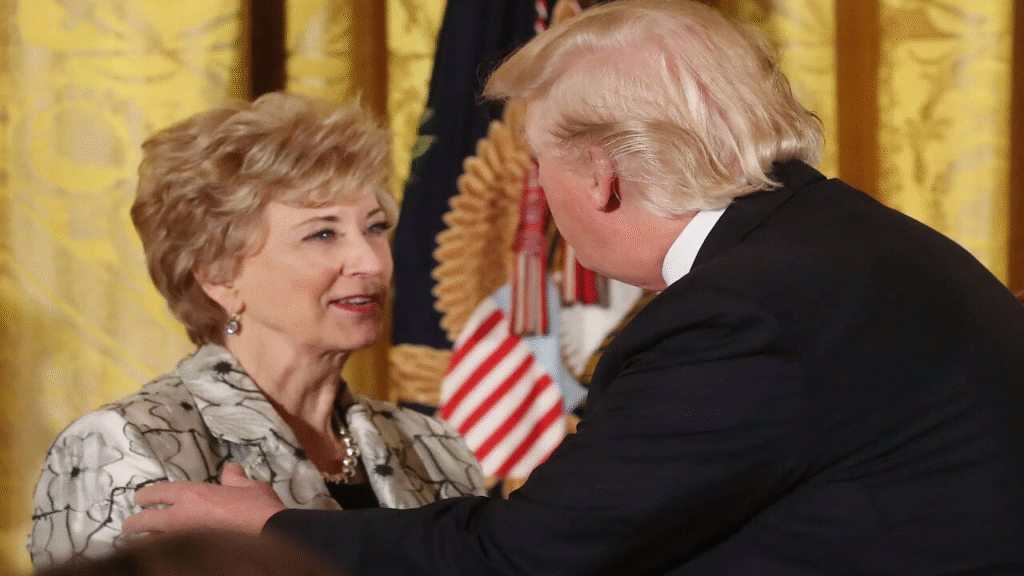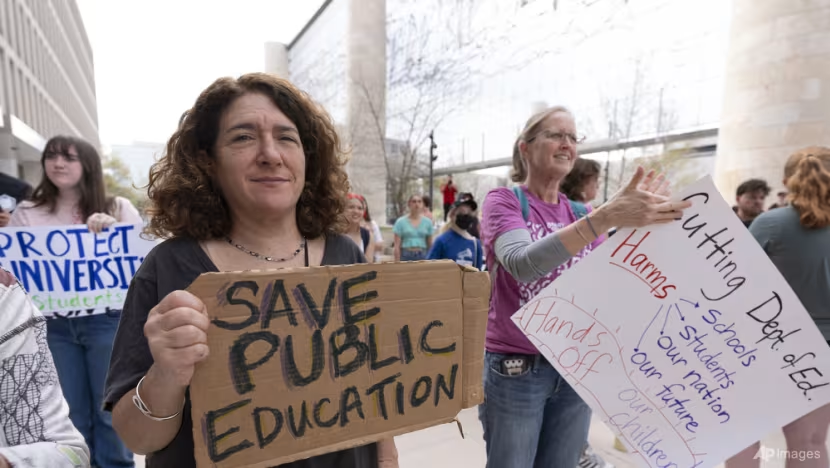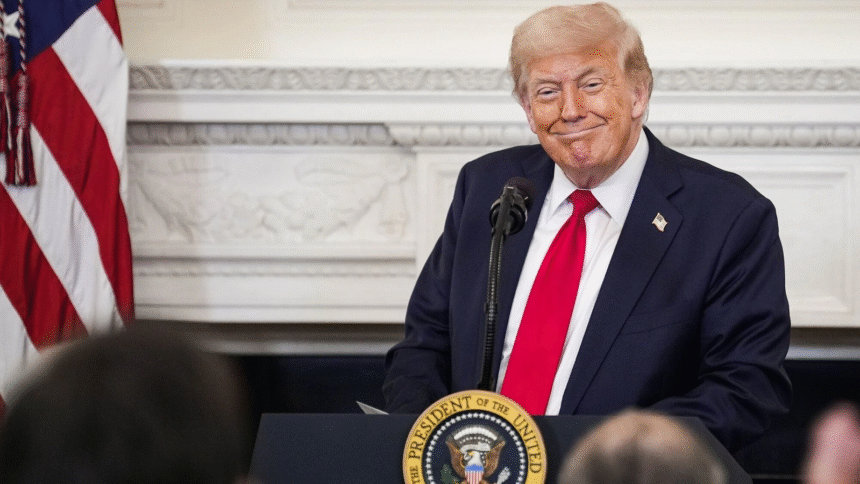Trump Scores Major Victory as US Supreme Court Clears Path to Slash Education Department — 5 Key Implications Explained
Winding down the education department was one of Donald Trump’s biggest promises during his presidential campaign
US President Donald Trump secured another win on Monday as the Supreme Court cleared the way for his plan to dismantle the Department of Education, allowing him to lay off nearly 1,400 workers.
The top court justices lifted a federal judge’s order reinstating the workers affected by the mass layoffs at the education department and blocking the Trump administration from transferring major functions to other federal agencies.
US District Judge Myong Joun in Boston had said that the layoffs “will likely cripple the department”.
This is the second major win for Trump from the top court in a week. The Supreme Court last week cleared the way for Trump’s sweeping plan to downsize the federal workforce, overriding lower court rulings that had temporarily blocked the move.

The dismantling of the education department is a part of the US President’s plan to shrink the role of federal government in education to allow more state control.
One of Trump’s biggest promises during his presidential campaign was to wind down the education department, which the US Supreme Court has now cleared the path for.
The top court, however, did not explain the reason for its decision in Trump’s favour, as is customary in emergency appeals.
Justice Sonia Sotomayor complained in dissent that her colleagues were allowing legally questionable action on the Trump administration’s part. “When the Executive publicly announces its intent to break the law, and then executes on that promise, it is the Judiciary’s duty to check that lawlessness, not expedite it,” she wrote for herself, and Justices Ketanji Brown Jackson and Elena Kagan.
According to a union that represents some of the education department’s staff said that employees, who were targeted by the mass layoffs, had been on paid leave since March.
Judge Myong Juon’s order had earlier prevented the education department from fully dismissing these employees, though none were allowed to work either, according to the American Federation of Government Employees Local 252. The employees would have been terminated in early June itself, had it not been for Juon’s order.
In June, the education department said that it was “actively assessing how to reintegrate” employees. A department email asked staffers to share if they had gained other employment, saying that the request was aimed at supporting a “smooth and informed return to duty”.
The case that the top court heard consisted of two consolidated lawsuits against the President’s plan, which they said was an illegal closure of the education department.
One suit was filed by the Somerville and Easthampton school districts in Massachusetts, along with the American Federation of Teachers and other education groups. The other suit was filed by a group of 21 Democratic attorneys general.

The lawsuits argued that the layoffs left the education department unable to carry out its responsibilities as required by Congress, including duties to support special education, distribute financial aid and enforce civil rights law.
In a major political and judicial development that could redefine the federal role in American education, the U.S. Supreme Court has effectively paved the way for former President Donald Trump’s long-standing goal of downsizing — or even dismantling — the Department of Education. The decision marks a significant conservative triumph and is already sparking heated debate nationwide over the future of public education in the United States.
The 6-3 ruling, delivered along ideological lines, struck down regulatory protections that have historically shielded large portions of the federal education system from executive interference. The Court ruled that federal departments cannot operate with “unchecked administrative independence”, thereby affirming the power of the Executive Branch to reorganize or eliminate federal agencies through congressional support and legal procedural channels.
The ruling has opened the door for Trump and his Republican allies to push forward with a plan to drastically gut the Department of Education, transferring most powers back to states and local school districts. This aligns with Trump’s 2024 campaign promises, where he vowed to reduce “federal overreach” and give parents more control over curriculum and school governance.
The case — States for Educational Sovereignty v. Department of Education — challenged the constitutionality of the Department’s regulatory autonomy, particularly its role in imposing federal standards on state-run public schools. Chief Justice John Roberts, writing for the majority, said:
“The Constitution does not grant unelected federal agencies the power to govern over local education policies without clear legislative authority.”
The ruling doesn’t immediately dissolve the Department, but it sets a legal precedent that allows future presidents and Congress to scale it back significantly — or potentially abolish it altogether — without violating the Constitution.
In a swift reaction to the Court’s decision, Donald Trump posted on his Truth Social account:
“Today’s ruling is a MASSIVE WIN for parents, students, and American freedom. The Department of Education has become a bloated bureaucracy pushing radical ideology. We will take back education and return it to local schools and loving parents!”
Trump’s supporters have long accused the Department of imposing “leftist indoctrination” through programs on gender identity, race education, and federal testing standards. The former president’s goal is to shift power to states, enable school choice expansion, and end Common Core-style mandates.
- States Gain More Control: States could soon take full control of K-12 education policies, curricula, and assessment methods without federal interference.
- Federal Funding in Limbo: With the Department’s future uncertain, major education grants and Title I programs for disadvantaged students may face funding disruptions or be restructured.
- Shift Toward School Choice: Trump-backed proposals could funnel more public money into private, charter, and religious schools through vouchers and tax credits.
- Civil Rights Enforcement at Risk: The Department’s Office for Civil Rights, responsible for handling discrimination in schools, may lose authority or face restructuring.
- Legal Uncertainty Ahead: Lawsuits from education advocacy groups, teachers’ unions, and civil rights organizations are expected as the political battle intensifies.
During his 2024 campaign, Trump repeatedly promised to “shut down the Department of Education,” calling it an “unconstitutional power grab.” The Supreme Court’s ruling now gives him the legal tools to attempt just that if Republicans gain full control of Congress in the upcoming 2026 midterms.
The ruling also energizes Trump’s base ahead of his likely 2028 endorsement efforts and will likely become a key conservative talking point in gubernatorial and state-level races, particularly in red states eager to assert educational independence.
Read Also : Jaishankar Meets Xi Jinping: 5 Key Highlights from India-China Diplomatic Talks in Beijing








